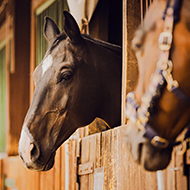RVC reveals cat breeds at risk of diabetes mellitus
For the first time, the Burmilla breed was found to be at increased risk of DM.
New research from the Royal Veterinary College (RVC) has revealed insights which could help reduce the early mortality rates of cats with diabetes mellitus.
The project examined the epidemiology, risk factors and outcomes of diabetes mellitus in cats, hoping to gather vital information for veterinary professionals and cat owners.
Diabetes mellitus (DM) is a common hormonal condition in cats, often resulting in animals being euthanised at the time of diagnosis. Cats living with the condition require daily medication and regular examinations.
RVC draws similarities to the human global diabetes epidemic, with its small animal referral specialists reporting seeing 40 cases in the first five months of 2025.
Researchers examined data from RVC’s VetCompass programme, studying the characteristics and survival rates of 1,053 cats with DM in 2019. They aimed to establish the scale of early death in cats with DM.
The analysis found that approximately one in every 250 cats in the UK live with DM every year.
It also revealed that 10 per cent of cats diagnosed with DM were euthanised within three days of diagnosis. This supports findings from a questionnaire, conducted in various global locations, which drew the same statistics.
Researchers confirmed that Burmese cats were at increased risk of developing DM. However, for the first time, the Burmilla breed was also found to be at increased risk of DM.
In contrast, Bengal and Ragdoll breeds were more protected from DM, compared to crossbred cats.
RVC suggests that veterinary professionals proactively discuss the risks of DM with all cat owners, especially those with Burmese or Burmilla breeds. Researchers hope that raising awareness could prompt cat owners to take actions to prevent DM development, such as cat weight management.
Ruth Gostelow, senior lecturer in small animal internal medicine at RVC, said: “Our study highlights that there is clearly more to be done to reduce the ongoing, high euthanasia rate experienced by diabetic cats at diagnosis, and this should be an important target for the UK veterinary profession.
“The findings from our study provide an important baseline value for early mortality, which we hope can be improved by advancing our knowledge on how best to prevent and treat diabetes mellitus in cats.”
The full study can be found in the Journal of Veterinary Internal Medicine.
Image © Shutterstock



 Zoetis has launched a new survey to identify management techniques for Equine Herpes Virus (EHV).
Zoetis has launched a new survey to identify management techniques for Equine Herpes Virus (EHV).